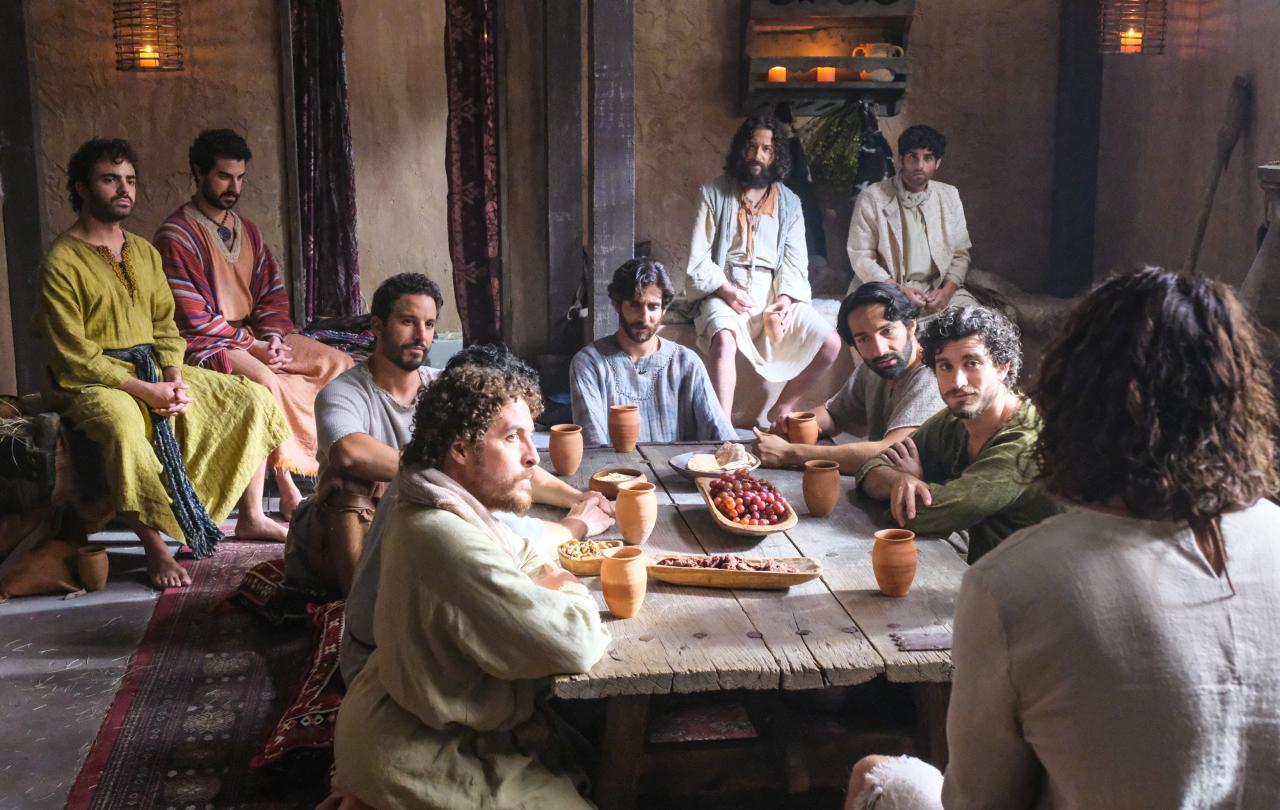
On February 6th 2023, a heavily pregnant Afraa Abu Hadiya, along with her husband and their four children, was awakened in the dark, early hours of the morning by a 7.8 magnitude earthquake violently shaking their apartment building in Syria. Afraa and her husband gathered their children and made for the building’s exit. However, just as they were nearing the door, the building collapsed upon them, crushing the entire family. Afraa, however, seems to have remained conscious for some hours because she did the unthinkable and delivered a baby girl while trapped beneath the rubble. Then, tragically, she died and her baby was left alone buried beneath a building in the middle of winter.
This year we have read too many such stories. In places such as Syria, Turkey, Ukraine, and most recently, Israel and Gaza, thousands of women, men, and children have suffered and died and grieved as a result of natural disasters and armed conflict.
For those of us who live in relative safety, it is difficult even to begin to comprehend such tragedies. Yet despite our advantages, many of us are struggling in our own ways. According to the CDC, between 25 and 30 per cent of adults in the US are currently experiencing symptoms of anxiety and/or depression. And it is no secret that mental distress levels have been steadily climbing for years in the UK as well, especially amongst youth.
It can make the joyful, merry, jolly, happy, cheerful, peaceful Christmas spirit encouraged at this time of year strike a discordant note with the actual state of our minds and hearts. All is not well inside many of us, but we sense that Eeyore is an awkward personality to bring into a room, so we tend to conceal the parts of ourselves that are anxious and hurting. I confess I’ve become pretty adept at keeping parts of myself out of sight.
I didn’t say that sometimes I feel like everything beautiful and good is always, sooner or later cornered, caught, and hauled away by the destructive forces in the world.
I met up with a couple of friends recently. We talked about our children and their school and our plans for Christmas. I said we were going to keep Christmas simple this year. What I didn’t say was that we’ve been keeping Christmas “simple” for several years now. I didn’t say that, a few years after my brother died, my parents and my siblings and I agreed that we would no longer see each other at Christmas because the hole my brother left is too acutely obvious when the rest of us are together. I didn’t say that we don’t keep our Christmas tree up for long because the crystal star we hang near the top is in memory of our son who never saw his first Christmas, and while I love to make him a part of the holiday in this way, I also can’t live with the visual reminder of that pain for long. I didn’t say that although we make an effort to give our children a happy Christmas, my husband and I are just trying to make it through to the other side of the holidays because we’ve twice in recent years painfully and unexpectedly lost our household income right before Christmas and the season now triggers within us the fear and confusion and hurt of those Christmases. I didn’t say that sometimes I feel like everything beautiful and good is always, sooner or later cornered, caught, and hauled away by the destructive forces in the world. I just told my friends that we were going to keep Christmas simple. Maybe you have your own lines you trot out on such occasions.
If you do, the season of Advent is a welcoming space for such as us. Advent is observed during the four weeks leading up to Christmas and marks the beginning of the Christian church year. Traditionally, it is a time when Christians remember how their spiritual ancestors, the ancient nation of Israel, spent roughly 600 years being conquered and enslaved successively by Assyria, Babylon, Persia, Greece, and then Rome. The God of Israel had, however, promised that he would, one day, send them a deliverer, a “messiah”, to rescue them from their bondage. And so, the Israelite people, in their suffering, waited and looked and prayed for the coming of their deliverer.
Christians believe that Jesus, whose birth is celebrated at Christmas, was that messiah, and that (spoiler warning) he ended up delivering not only Israel, but the whole world in a very different way than anyone was expecting. (But that’s the story of Easter, and we’re not there yet.) During Advent, Christians remember the centuries of Israel’s powerless waiting to be rescued, and how, true to his word, God sent them a messiah.
Choosing this hope sometimes feels naïve and even dangerous. I want to have hope, to hold it like a banner against the forces of destruction and pain whirling about in the air.
However, Advent is not just for looking back. It is also a space for acknowledging all the myriad ways in which darkness still rules over us today. How we still suffer and hurt and die. How we inflict these things on each other. How it seems like, no matter how we try to make the world better, it’s still always in a tragic mess. And then, while we’re acknowledging all of that and feeling its great weight, Advent asks us to do something that feels preposterous at times: to believe the promise Jesus made that he will, one day, banish darkness from the earth and make it completely and irreversibly whole and new. In short, we’re asked to continue to wait hopefully for light to break while we live in the darkness.
Choosing this hope sometimes feels naïve and even dangerous. I want to have hope, to hold it like a banner against the forces of destruction and pain whirling about in the air. But, in the face of the anguish of Israel and Gaza, and the wounds I’ve experienced in my own life, do I dare live as if everything will come right in the end? I would like to, but when hope ends in disappointment it wounds deeply. I’m not always sure I can afford to risk hope.
If you still weep and mourn for what is wrong in the world, however powerless and wounded you may feel, you are not yet overcome.
Advent urges me never to stop calling for help, but if calling for help isn’t exactly the same thing as summoning hope, it’s perilously close. Is it possible to call for help if I don’t believe, if I am afraid to let myself believe any help will arrive?
Well, apparently it is. I learned this from Afraa’s tiny daughter buried in rubble.
After the earthquake, relatives and friends rushed to the ruins of the collapsed apartment building in order to try to rescue those who had been inside. As they dug through the debris, one of them reported hearing “a voice” from beneath the rubble. The rescuers followed the sound and eventually uncovered the baby, still attached to her mother by the umbilical cord. She was pulled from the wreckage of her house and family, and sped to hospital where she miraculously made a recovery and was adopted by her aunt and uncle who gave her her mother’s name.
She was rescued because someone heard her voice. The journalist does not specify what kind of noise she was making, but given that she was injured, suffering from hypothermia, and barely breathing it seems it must have been weak crying or whimpering. And considering that she was surrounded by her dead mother, father, and four siblings, and that the entirety of her short life outside her mother’s body had consisted of the noise, terror, chaos and pain of the building falling upon her, it seems impossible that she was hopefully and consciously calling for help. How could she imagine what help might be? Her mother had not even had the chance to hold her in her arms. What could she know of a tender face, gentle hands, warm blankets, nourishment in her belly, soft fabric against her skin, the healing of wounds? She was not waiting or hoping for any of these. She did not even know they existed. She was simply weeping for the terror and pain and loneliness of her little life. But the weeping was enough to save her.
As I consider tears, it seems to me that they can, in themselves, be reason for hope. The person who weeps has accepted neither that things are the way they should be (as do those who cooperate with or advance the destructive forces in the world), nor that things are the way they must be (as do those who, however understandably, give up and surrender themselves to being destroyed). If you still weep and mourn for what is wrong in the world, however powerless and wounded you may feel, you are not yet overcome. In fact, unless we grasp how grievous our wounds are, how can we begin to seek out the right physician? How will we choose to make the changes within our power to make? A world that is lamenting its own brokenness, as Advent encourages it to do, seems to me to be a world for which there is yet hope.
I have never experienced the trauma of a building collapsing upon me, but I’ve spent plenty of time trapped beneath the twin wreckages of a life I once had and the one I was hoping to build. Maybe you’re buried in rubble too. Maybe you’ve survived an earthquake and its aftershocks, but you’re not sure you’re glad you have because you’re bleeding and crushed and in the dark and you can’t imagine how you will rebuild and survive in such a world even if you do eventually emerge. Maybe you’re not even sure you want to be rescued because it’s all, all broken now – your home, your family, your bones.
This Advent I am trying to gather the strength to call for help for myself and for the world although my heart and my faith are bruised. Maybe you will call too. But if we are too afraid and confused and wounded to do even that, then let us weep, friend, together in this darkness. For although this is a world in which much breaks and dies, it is also one in which rescue has been known to arrive unlooked and unhoped for. And if the memory and the promise of Advent hold any truth, sometimes the hand outstretched unexpectedly to deliver turns out to be, beyond all imagining, the hand of God.





